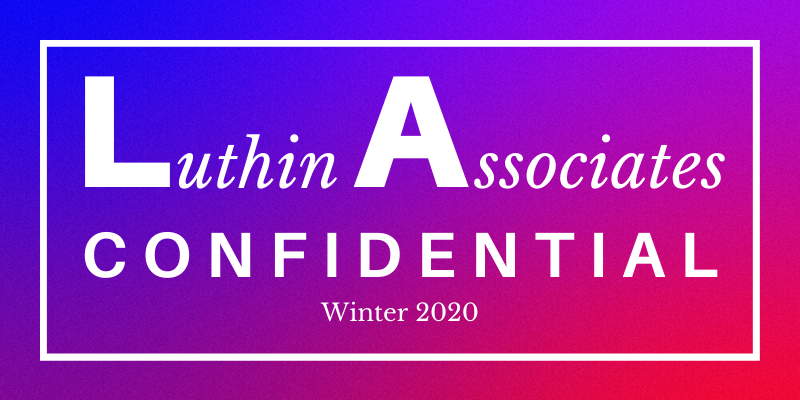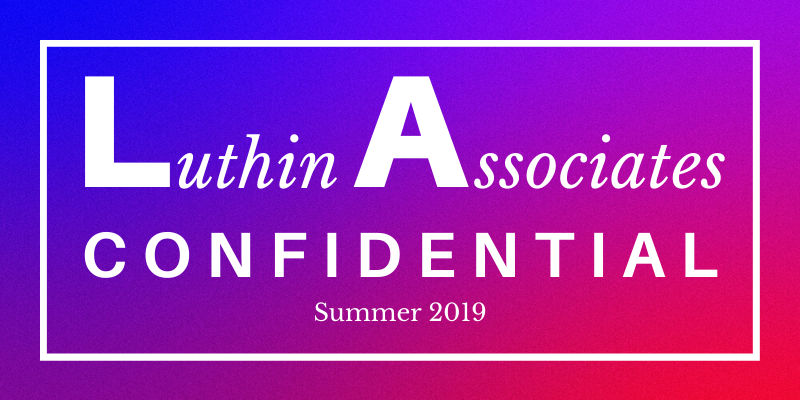On behalf of the team at 5, I am pleased to forward our market letter for the third quarter of 2020. This letter focuses on the upcoming Presidential election, the confirmation of Judge Amy Coney Barrett to the Supreme Court, and the potential impact of these events on energy policy. The election and a changing court will impact how energy policy is regulated both at the Federal and the state level. Notwithstanding the perceived impact of these changes in Washington, we caution against putting too much weight on political and judicial changes. In short, it is often the case that when it comes to energy policy, economics, not politics, often prevails.
8 min read
October 2020 - Quarterly Market Letter
By Jon Moore on October 21, 2020
Topics: Sustainability Newsletters Education Renewables Resiliency
7 min read
July 2020 - Quarterly Market Letter
By Jon Moore on July 13, 2020
On behalf of the team at 5, I am pleased to forward our market letter for the second quarter of 2020. This letter updates our analysis of COVID-19 and its impact on energy demand. It also discusses the pandemic’s impact on state renewable goals, and how FERC’s position on several important energy policy decisions could shift depending on which party wins the 2020 presidential election.
Topics: Newsletters
6 min read
May 2020 - Quarterly Market Letter
By Jon Moore on May 28, 2020
On behalf of the team at 5, I am pleased to forward our first market letter for 2020. Since the spread of COVID-19, our primary concerns have been the safety of our team and supporting our clients. I want to give special thanks to our technology team and its leader, Matt Shaw. Matt planned and executed our multi-year effort to develop an industry leading technology solution, Level5. While we did not build this system with a pandemic in mind, it has allowed us to support clients without interruption during these difficult months. Not surprisingly, this market letter is focused on COVID-19 and its broad and evolving impact on the energy market.
Topics: Newsletters
8 min read
January 2020 - Quarterly Market Letter
By Jon Moore on January 23, 2020
On behalf of the team at 5, I am pleased to forward our market letter for the fourth quarter of 2019. Today energy deregulation is a tale of two markets. The Mid-Atlantic states (PJM), New England (NEISO) and New York (NYISO) are caught in a struggle between state regulators who seek to subsidize carbon-free generation and opponents who argue (for economic, policy, or political reasons) that these subsidies threaten the viability of a competitive market. The debate reached a crescendo last quarter when the Federal Energy Regulatory Commission (FERC) issued an order that effectively undercuts current state subsidies of carbon-free power generators.
Topics: Newsletters
1 min read
Factoid: Cutting Cattle Greenhouse Gas
By Luthin Associates on January 15, 2020
Could eating seaweed save the climate?
Cows are a significant source of methane, which is a powerful greenhouse gas, primarily from belching as they digest grass and feed (with more coming out the cow’s back end). But recent research found that mixing in a tiny amount (0.5%) of a type of seaweed into their food greatly cuts methane output, with no negative impact on milk production.
Topics: Newsletters
3 min read
Be Vewy Vewy Quiet. I'm Hunting Carbon
By Luthin Associates on January 15, 2020
The biggest issue confronting the energy industry in New York today is decarbonization. That is, how to reliably meet the energy needs of the state’s residents and businesses while drastically reducing and eventually eliminating altogether greenhouse gas emissions - and do it without breaking the bank. The challenge is especially – well, challenging – for the electricity sector. Under the Climate Leadership and Community Protection Act (CLCPA), enacted into law this summer, all the electricity needs of New York are to be met by carbon-free resources no later than 2040.
Topics: Newsletters Resiliency
3 min read
Time to Look Again At Your Lighting
By Luthin Associates on January 15, 2020
Elmer Fudd may never find that wascally wabbit by looking down a rabbit hole, but building owners and managers can find a chunk of energy and cost savings just by looking up at their ceilings.
T8 and T5 fluorescent lamps powered by electronic ballasts, the high-efficiency standards of the ’80s and ’90s, may now be easily replaced by light-emitting diode (LED) systems that cut wattage and carbon emissions by half or more while providing the same amount of light. In Con Ed territory, LEDs may pay for themselves in 2-4 years. That’s an ROI of 25%-50%, better than most cost-cutting options available to buildings. Toss in the near elimination of re-lamping (due to 15-20-year LED lifetimes), and no more lamp recycling (LEDs contain no mercury), and even Yosemite Sam will feel like he’s struck gold.
Topics: Newsletters
7 min read
October 2019 - Quarterly Market Letter
By Jon Moore on October 7, 2019
On behalf of the team at 5, I am pleased to forward our market letter for the third quarter of 2019. This letter discusses: (i) electricity price spikes in Texas, (ii) new limits on natural gas usage in New York, and (iii) California’s continued struggle with the linkage between power lines and wildfires.
Topics: Newsletters
7 min read
July 2019 - Quarterly Market Letter
By Jon Moore on July 8, 2019
On behalf of the team at 5, I am pleased to forward our market letter for the second quarter of 2019. The beach is a great place to find some wind and not just to fly a kite. In fact, many Northeastern states are counting on offshore wind to meet their renewable generation goals. This letter reviews recent offshore wind developments and explores how realistic these projects are in light of: (i) the relatively high cost of offshore wind, and (ii) the permitting required to construct these projects and the related transmission infrastructure.
Topics: Newsletters
3 min read
Will Power Storage Incentives Be the Key to Expanding Renewables?
By Luthin Associates on June 27, 2019
As battery power storage pricing drops, new installation goals and incentive programs are emerging. New York State is pushing for 1.5 gigawatts (GW = 1000 MW) of storage capacity by 2025, and 3 GW by 2030. Utility level and behind-the-meter (BTM) projects promoted through equipment rebates and power price adjustments under the Value of Distributed Energy Resources (VDER) process. The Federal Energy Regulatory Commission’s (FERC’s) Order 841 offers access to wholesale power markets by mandating Independent System Operators (ISOs) create rules for entry and valuing of power storage capacity.









